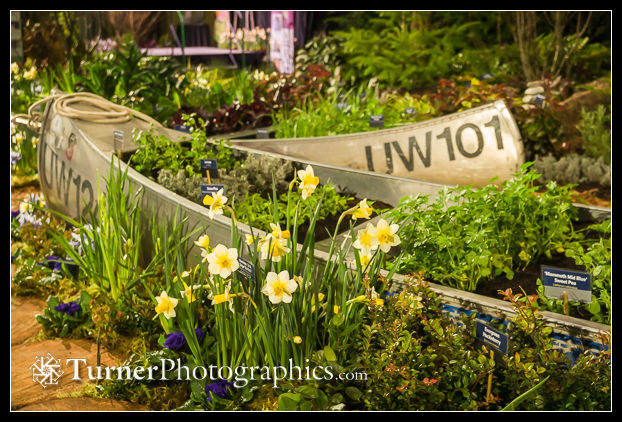Something Old, Something New
![Ground-ivy [Glechoma hederacea]. Turner Photographics Garden, Bellingham, WA. © Mark Turner [2001701] Ground-ivy](/wp-content/uploads/2020/04/Turner_2001701.jpg)
This pretty little garden weed, which goes by the names Ground-ivy, Gill-over-the-ground, Creeping Charlie, or Field Balm (Glechoma hederacea) is one of the first plants I learned the name of when I was a kid. It grew at the edges of my dad’s garden in West Virginia … and it grows today in our garden in Bellingham on the other side of the continent. The name I use most often is Gill-over-the-ground because that’s how I first learned it, but out here in the west I don’t hear many people using that name.
Ground-ivy isn’t native to either the Appalachians or the Pacific Northwest; it’s another of many plant introductions from Eurasia. Continue reading


![Pacific Ninebark & Western Serviceberry shrubs w/ Grape Hyacinths, 'Blue Cloud' Geranium foliage [Physocarpus capitatus; Amelanchier alnifolia; Muscari armeniacus; Geranium 'Blue Cloud']. Turner Photographics Garden, Bellingham, WA. © Mark Turner [2001583] Native shrubs in spring garden](/wp-content/uploads/2020/04/Turner_2001583.jpg)
!['Flore Pleno' Bloodroot & purple Violets w/ Giant Purple Wakerobins soft bkgnd [Sanguinaria canadensis 'Flore Pleno']. Turner Photographics Garden, Bellingham, WA. © Mark Turner [2000991] 'Flore Pleno' Bloodroot, 300mm lens](/wp-content/uploads/2020/04/Turner_2000991.jpg)
![Henbit blossoms & foliage [Lamium purpureum]. Turner Photographics Garden, Bellingham, WA. © Mark Turner [2000490] Henbit blossoms](/wp-content/uploads/2020/03/Turner_2000490.jpg)
![Woolly Mullein basal rosette w/ Creeping Buttercup foliage [Verbascum thapsus; Ranunculus repens]. Turner Photographics Garden, Bellingham, WA. © Mark Turner [2000327] Woolly Mullein](/wp-content/uploads/2020/03/Turner_2000327.jpg)
![Early spring native shrub garden w/ home bkgnd [Crataegus douglasii; Ribes aureum; Ribes sanguineum; Amelanchier alnifolia; Penstemon serrulatus; Cornus sericea]. Turner Photographics Garden, Bellingham, WA. © Mark Turner [2000258] Early spring native shrub garden](/wp-content/uploads/2020/03/Turner_2000258.jpg)
![Golden Currant emerging foliage & flower buds [Ribes aureum]. Turner Photographics Garden, Bellingham, WA. © Mark Turner [2000311] Golden Currant emerging foliage](/wp-content/uploads/2020/03/Turner_2000311.jpg)
![Purple-leaf Plum blossoms in red vase [Prunus cerasifera]. Turner home, Bellingham, WA. © Mark Turner [2000231] Purple-leaf Plum blossoms in red vase](/wp-content/uploads/2020/03/Turner_2000227-Edit.jpg)

![Birdfeeder & winter garden by moonlight. Turner Photographics Garden, Bellingham, WA. © Mark Turner [2000041] Birdfeeder & winter garden by moonlight](/wp-content/uploads/2020/01/Turner_2000041.jpg)